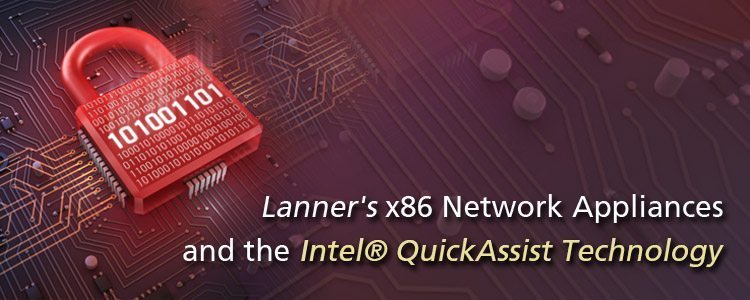Introduction
Network security measures deployed across most of today’s enterprise network architecture usually involve SSL, data compression, VPNs or a combination of either three. SSL, or Secure Socket Layer, is used for information encryption; data compression, on the other hand, ensures bandwidth efficiency and increases WAN throughput while VPNs, or Virtual Private Networks, allow for cost-effective and secure remote access to private networks. Regardless of which security measures are eventually implemented, hardware/software integration must first be optimized and streamlined in order to support security functions’ computationally intensive algorithms.
Understanding Intel® QuickAssist Technology
Intel® QuickAssist Technology employs a hardware-assisted security engine for implementing major security functions in both wired and wireless applications. This hardware-assisted security engine works to reserve processor cycles for application processing, and that in turn not only relieves CPU burden but also improves overall system performance. Intel® QuickAssist Technology, made integral to the Intel architecture, aims to address the demand for hardware appliances with built-in security processing and to obviate the need for 3rd party co-processors.
The Advantages of Intel® Quick Assist Technology
The Intel® QuickAssist Technology has the following comparative advantages:
- C2000-based SoC for reducing board real estate and platform BOM costs
The Intel® QuickAssist is an integral part of the Intel Atom Processor C2000 Product Family (formerly codenamed Rangeley), therefore hardware powered by the C2000-based SoCs are perfect for thermally constrained solutions such as entry to mid-range SMB routers, wireless access gateways, communications servers and other network security appliances.
- Intel® DPDK for improving packet processing speed
Intel Data Plane Development Kit (DPDK) manages communication workload consolidation for hardware appliances built with the Intel® architecture and it can be leveraged, on x86 based communication platforms with Intel® QuickAssist Technology, for increasing system functionality, performance and reliability.
- Techniques for user space driver efficiency
The Intel® QuickAssist Technology user space driver overcomes the inefficiency of traditional user space drivers with techniques such as zero copy NIC drivers and visibility of ring memory to user space.
- Intel Virtualization for efficient, virtualized workload and resource management
Flexibility in workload management is especially vital for cloud computing appliances. Coupled with the Intel Virtualization (VT-x and VT-d) enabled chipset, the Intel® QuickAssist accelerates security operation on multiple workloads in a virtualized environment at datacenters.
Lanner and the Intel® QuickAssist Technology
Lanner products, including system on a NIC, acceleration cards and x86 communication appliances, are equipped with the Intel® QuickAssist Technology, offering a variety of security acceleration solutions with performance, scalability and network capacity.
Lanner’s FW-8893C features two Intel Xeon E5-2600 Series processors that are paired with the 8950 chipset for handling not only enterprise-grade network traffic data rates but also associated control/signaling infrastructure requirements. Lanner’s Rangeley-based products, namely the FW-7573, the FW-7571, the FW-7551 and the FW-7525 are all power-efficient security appliances with multi-core processing capabilities (ranging from two cores to eight cores).
Lanner’s low-profile PCIex8 acceleration cards such as the AV-ICE01, the AV-ICE02 and the AV-ICE04, or Ethernet module, namely the NCS2-ICE03A can be added to expand existing servers’ security capabilities. The AV-ICE04, for example, utilizes PCI Express 3.0 interconnect technology and Intel chipset (8950 or 8955) for meeting the most demanding security requirements. These adaptors also deliver high levels of integration for scalable security acceleration with performance that ranges from 10Gbps to 100Gbps (50×2 of DH8955) for bulk crypto and 5Gbps to 46 Gbps (23×2 of DH8955) for compression.
The coupling of Lanner’s hardware solutions and the Intel® QuickAssist Technology enables rapid software development and fast time-to-market for security equipments in various network infrastructures.
